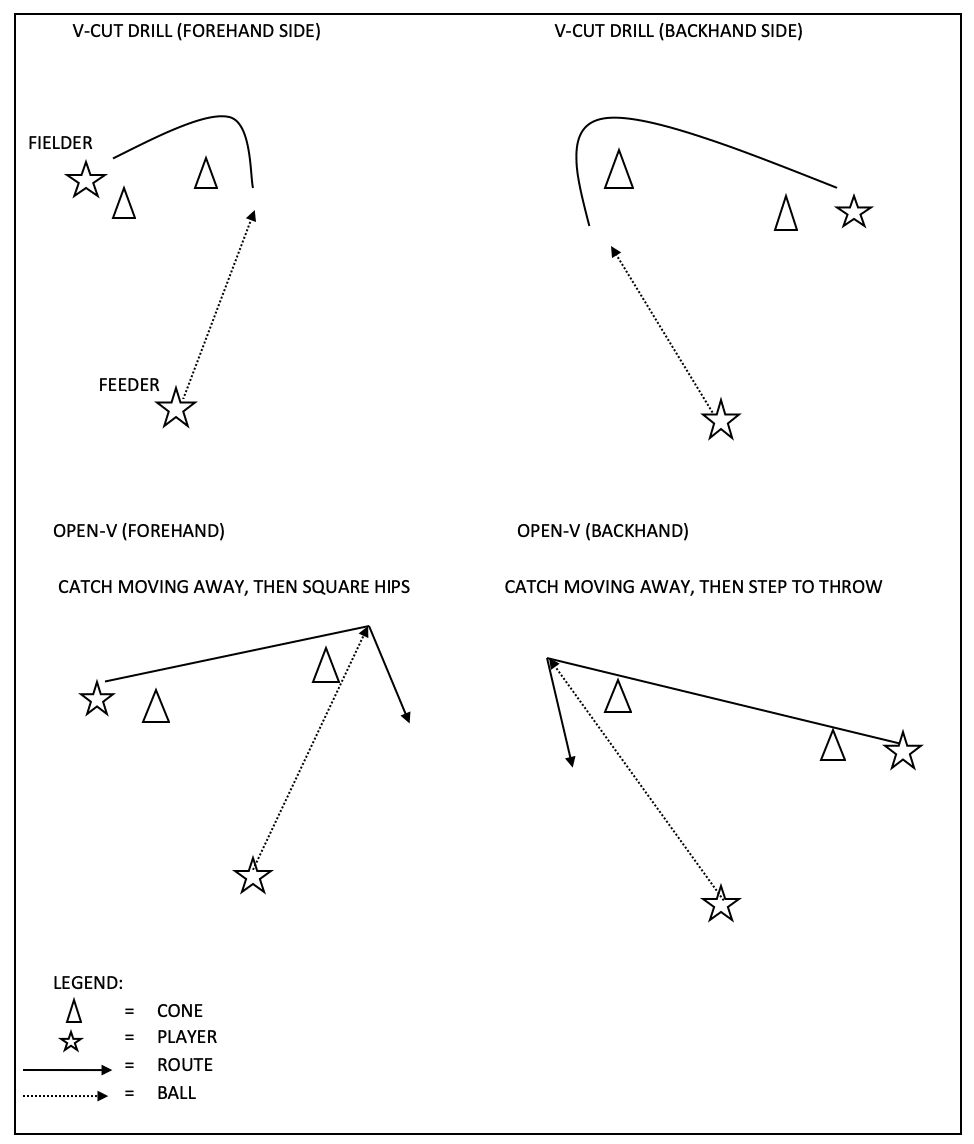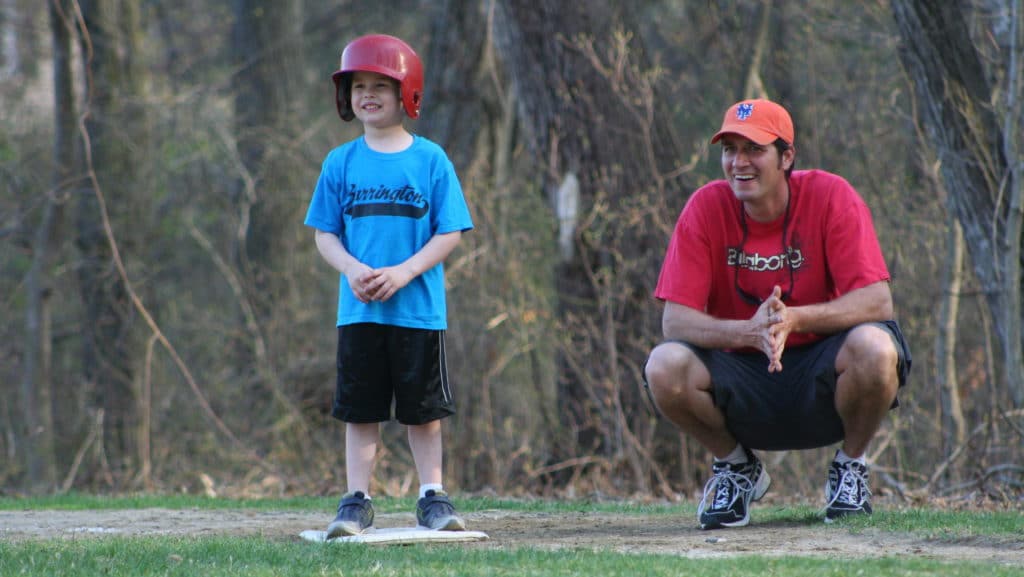Nearly a decade ago, I was coaching a semi-pro team in the Czech Republic’s second division. It was the beginning of the season — February, to be exact — and snowy South Bohemia was still weeks away from hosting outdoor baseball.
I knew that my players would have little or no time to prepare on the field prior to Game 1, so I needed to get them enough quality reps to be ready to play once the snow melted. That meant that in those early days, a big part of my job was figuring out how to plan productive practices for a team of high school and college-level baseball players in a space just a little bigger than a regulation basketball court.
If you’ve ever tried to run a baseball practice inside a gym, then you know just how difficult that task is. The safety concerns alone — balls flying and rolling in every direction and multiple people swinging bats at the same time — make this a logistical nightmare.
But if you plan correctly and think creatively, it can be done. The schedule below is an actual practice plan I used during the 2010 season.
6:00: Dynamic Warmup and Stretch
Whether on the field or in the gym, it’s best to start practice with a dynamic warmup routine (rather than static stretching). Research strongly suggests that pre-activity static stretching may be a negative factor when it comes to performance and injury prevention, whereas dynamic stretching (which increases blood-flow to the affected muscles and raises the body’s temperature) has been shown to have a positive effect.
6:25: Throwing
A regulation basketball court is 50 feet wide. If you have a team with 14 players (seven per side), that leaves just a little more than seven feet between each player — not a safe amount of distance by any measure.
My team was comprised of adults who were attentive and accurate, but if you’re coaching a youth team you may need to use a creative configuration to maintain a safe environment. One example is to cluster them in groups of four (two on each end, per group) and have the players alternate throws.
This allows you to essentially remove half of the team from the drill and double the space between players. However, it will also take longer to get everyone loose, so you need to make sure your players are being intentional and maintaining a solid pace.
Breaking their rhythm and speeding up their time between throws isn’t ideal. But if you have to get their arms some work in this environment, it’s a better option than putting them in a position where they might get plunked in the head.
6:40: Infielders (Defensive) + Outfielders (Hitting)
Infielders
In this drill sequence, infielders will get 160 total defensive touches in just 24 minutes, which is about seven per minute (or around one every 10 seconds). That’s a rapid pace, and your players will need to stay focused and on task to stick to this schedule.
In order to keep the both your players and safe and the gym safe, use tennis or lacrosse balls as opposed to baseballs.
12 minutes of hands work:
- Eyes behind the ball — 2 sets of 10 reps: Players start on their knees and work on getting their upper body parallel to the ground (as shown in this video).
- Short-hops — 2 sets of 10 reps.
- Forehands — 2 sets of 10 reps.
- Backhands — 2 sets of 10 reps.
- Soft hands — 2 sets of 10: Use the SKLZ softhands trainer.
- Turn and field — 2 sets of 10 reps: Fielders start with their back to their partner, who feeds them either a grounder, short-hop or high-hop. As the ball is on the way, the feeder will call for the fielder to quickly turn around and make the play.
12 minutes of footwork (see diagram below):
- V-cut, forehand side — 10 reps.
- V-cut, backhand side — 10 reps.
- Open-V, forehand side — 10 reps.
- Open-V, backhand side — 10 reps.
Infielders: Defensive Drills Diagram
In the V-Cut drills shown below (on the top of Figure 1), the fielder’s goal is to take a deep angle to the ball, get their body on the correct fielding line (i.e., “get around the ball”), and move through the ball to finish the play.
This means you need to know each player’s coverage speed and adjust your feeds accordingly.
Note that these drills take place in the middle of the gym, while outfielders are hitting in the four corners as shown in Figure 2.

Outfielders: Hitting Stations Diagram
The drill sequence below provides between 60 and 120 swings with contact. The pace and volume can be adjusted based on your players’ strength and needs. You can (and should) adjust the drills based on your own discretion.
24 minutes of hitting:
- Station 1: Free swings — 15 reps and switch.
- Station 2: Inside/outside — 15 reps and switch.
- Station 3: Side toss — 15 reps and switch.
- Station 4: Back toss — 15 reps and switch.
Hitting Station Diagram

7:04: Infielders (Hitting) + Outfielders (Defensive)
Infielders
24 minutes of hitting:
- Station 1: Free swings — 15 reps and switch.
- Station 2: Inside/outside — 15 reps and switch.
- Station 3: Side toss — 15 reps and switch.
- Station 4: Back toss — 15 reps and switch.
Outfielders
24 minutes of reaction and speed work:
- Ball Reaction Drills: Keep in mind that because of the limited space, this is a footwork drill rather than a catching drill. Outfielders need to start almost nose-to-nose with the feeder (which gives them more room to run), and the feeder needs to be careful not to place the ball too deep (causing the outfielder to drift into the hitting stations).
- Overhead, left — 5 reps.
- Overhead, right — 5 reps.
- Overhead, straight — 5 reps.
- Deep drop, short ball — 5 reps: Have the fielder drop back and then sprint forward, as if they misplayed the ball.
- Low line drive — 5 reps.
- Bounce Drills:
- Bounce catch — 5 reps: Bounce the ball overhead in any direction, creating a more unpredictable flight pattern than the previous reps.
- Bounce sprint — 5 reps: Fielders start deep and charge forward towards a bounced ball in front of them.
- Hard ground balls:
- Straight — 5 reps.
- Forehand side — 5 reps (get around the ball).
- Backhand side — 5 reps (get around the ball).
- Forehand side — 5 reps (deep angle).
- Backhand side — 5 reps (deep angle).
7:30: Team Speed Work
I’m not a huge fan of including conditioning in your practice plan. Players aren’t going to improve their fitness over the course of a few minutes a few times per week, and I’d rather spend that time on baseball-specific drills. However, if you have a team that hasn’t been engaged in a rigorous offseason program, then you may need to help them get back into the swing of things.
- Knee punches (video) — 10 per partner, each leg: One partner holds a hand or object at or above the waist, while the other partner thrusts his or her knee up to touch it.
- Resisted jumps (video) — 2 sets of 5, resting in between sets.
- Power skips (video) — 2 sets of 6 touches.
- Get-Ups (video) — 3 to 5 per side, depending on strength.
- Jump, jump, drive — 4 reps: Two broad jumps and then immediate acceleration into a sprint.
- Shuttle runs — 2 reps of 6 legs.
7:45: Team Range of Motion Stretching
Here’s where static stretching can be beneficial: performed post-activity, it can improve range of motion, which correlates to both better performance and reduced risk of injury. Note this paper, titled “Pre-Activity and Post-Activity Stretching – Perceptions and Practices in NCAA Division I Volleyball Programs,” which states:
“The current trend shows that static stretching tactics are better suited following activity, not before it (Anderson, Beauliue, Cornelius, Dominquez, Prentice, & Wallace, 1984; Egan, Cramer, Massey, & Marek, 2006; Nelson, & Brandy, 2008; Stone, Ramsey, O’Bryant, Ayers, & Sands, 2006; Swanson, 2008). Research supports that gains in range of motion can be achieved if static stretching is performed consistently post-activity as a part of the cool down (Mann & Whedon, 2001).”
8:00: That’s a Wrap!
Working in such close quarters isn’t ideal, but it is possible to plan and run an effective training session in a small environment. The practice template above provides approximately 160 defensive touches and between 60 and 120 swings with contact for 14 players in a gym — more than enough reps in almost all circumstances (and more than players usually get in a standard outdoor practice).






